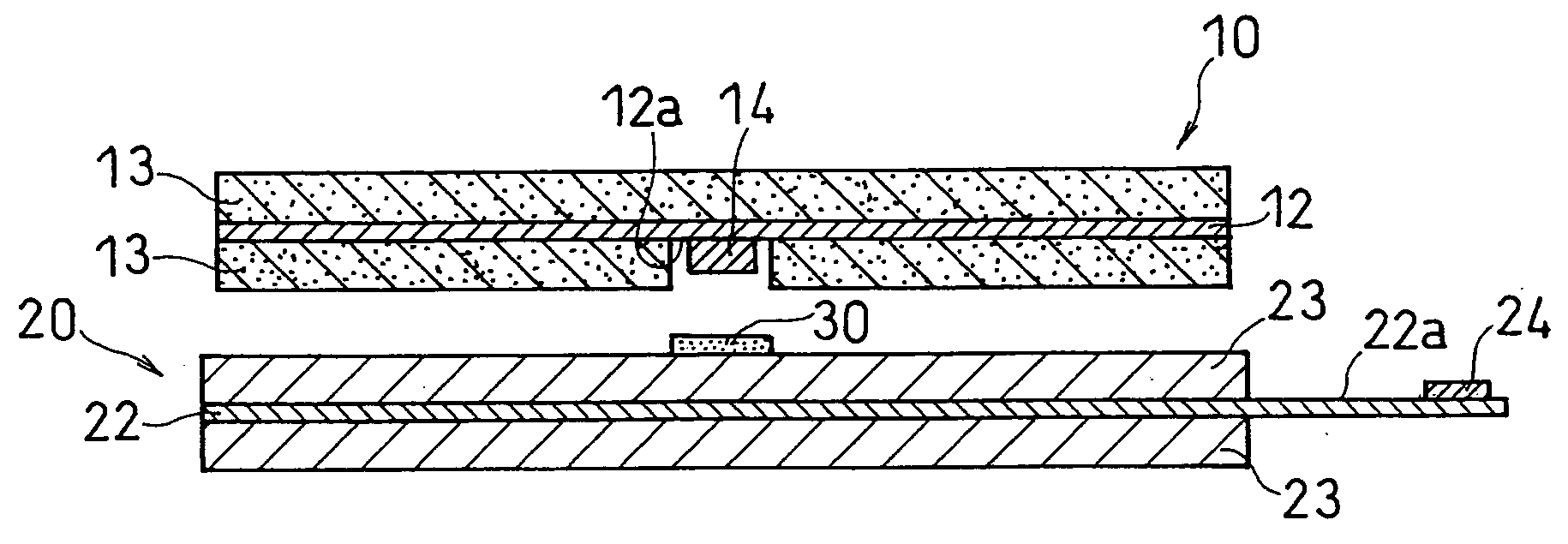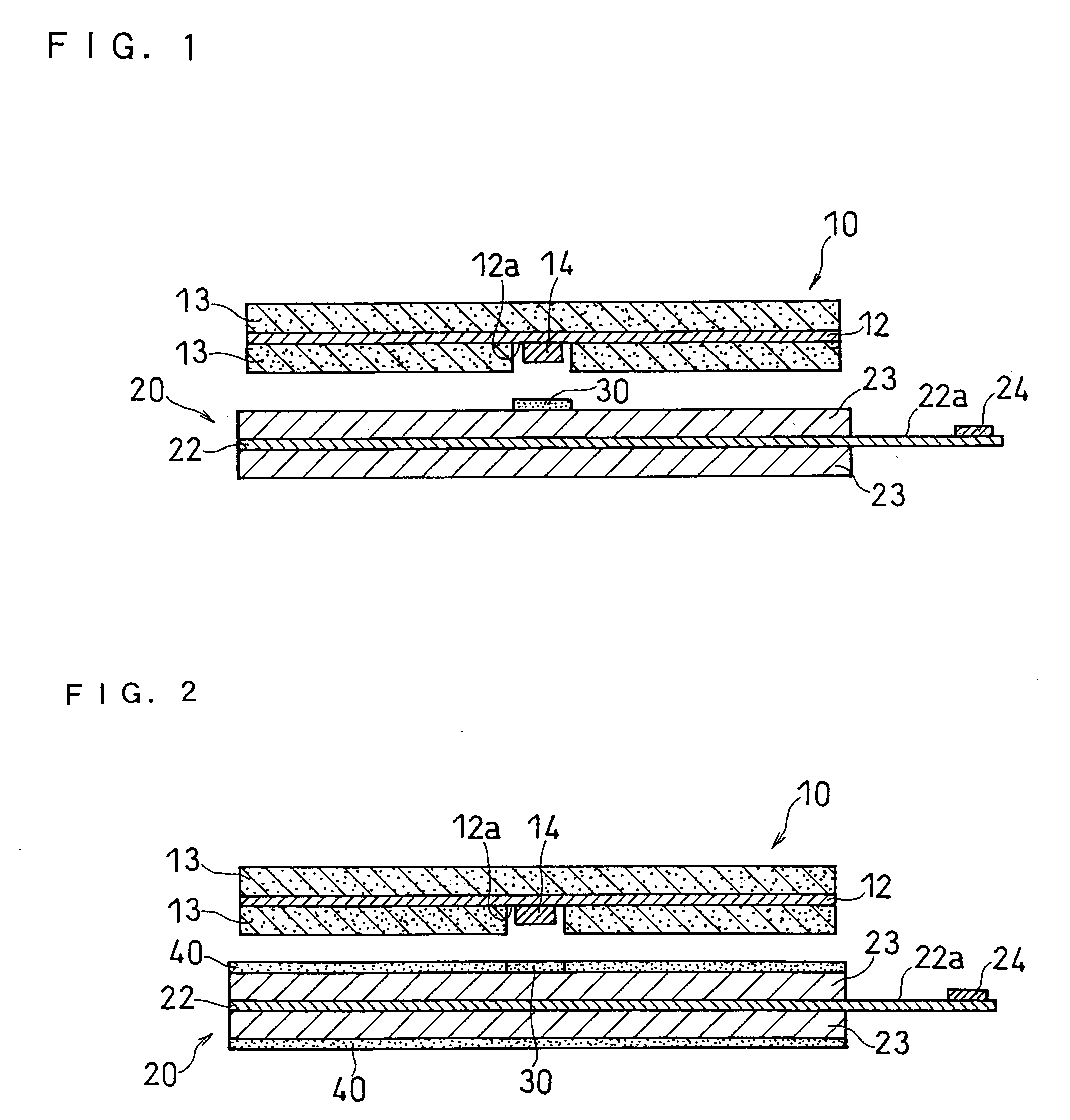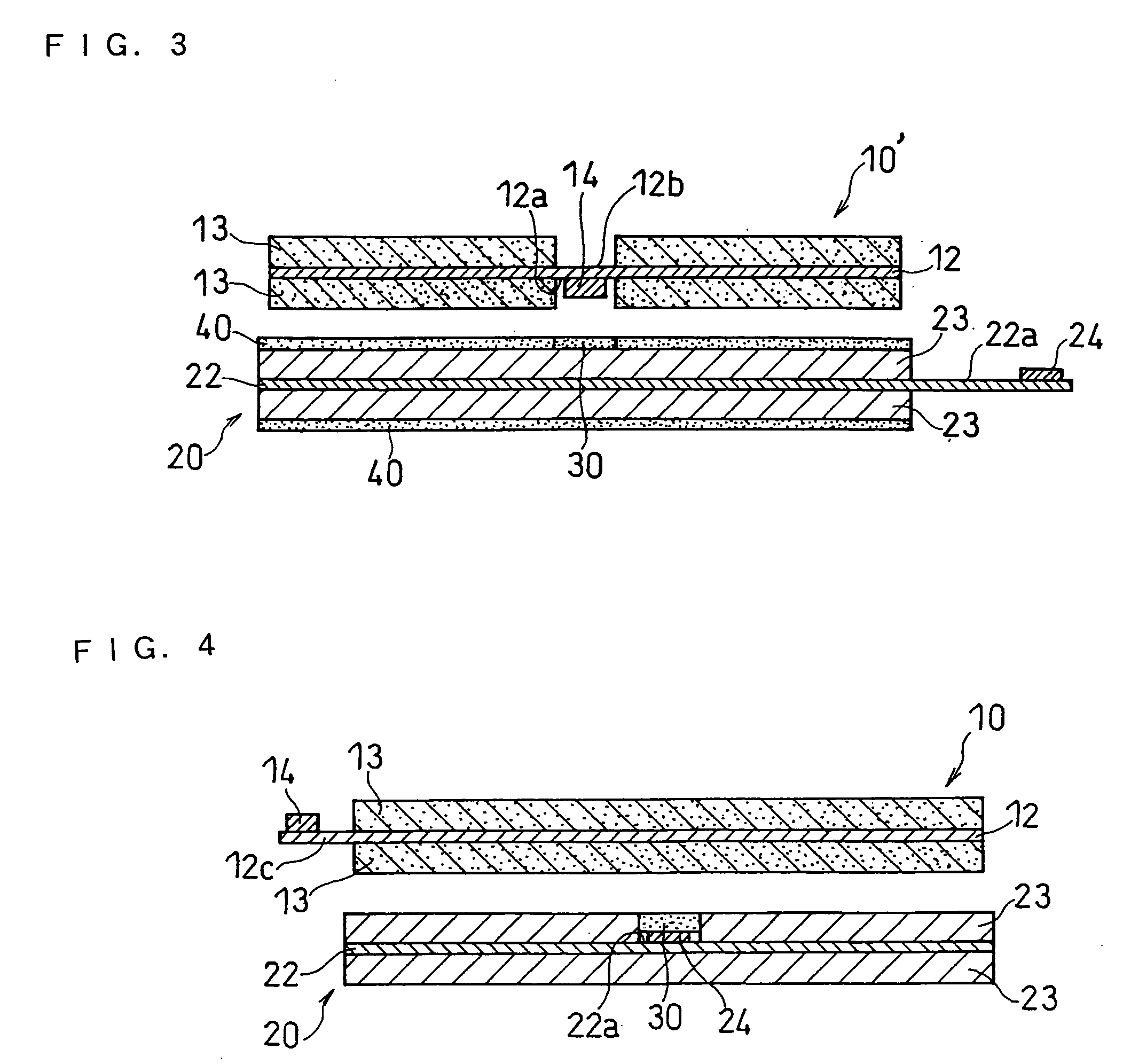Lithium secondary battery
- Summary
- Abstract
- Description
- Claims
- Application Information
AI Technical Summary
Benefits of technology
Problems solved by technology
Method used
Image
Examples
example 1
[0064](i) Production of Positive Electrode
[0065]A positive electrode material mixture paste was prepared by mixing 3 kg of lithium cobalt oxide with 1 kg of PVDF#1320 (an N-methyl-2-pyrrolidone (NMP) solution containing 12 wt % PVDF) available from Kureha Chemical Industry Co., Ltd., 90 g of acetylene black and an appropriate amount of NMP with the use of a double arm kneader. This paste was applied onto each entire surface of a 15 μm thick aluminum foil serving as a positive electrode current collector 12 except for a center exposed portion 12a, which was then dried and rolled to form positive electrode active material layers 13, each having an active material density of 3.5 g / cm3 and a thickness of 80 μm. The positive electrode current collector 12 was cut into a strip having a size of 600 mm×56 mm. Thereby, a positive electrode 10 was obtained. The center exposed portion 12a having a width of 15 mm was positioned exactly at the center in a longitudinal direction of the positive e...
example 2
[0071]As shown in FIG. 2, a lithium secondary battery was produced in the same manner as in EXAMPLE 1 except that a second heat resistant layer 40 was further formed using the same precursor paste as used for the first heat resistant layer in EXAMPLE 1. Specifically, in this example, in addition to the first heat resistant layer 30, a second heat resistant layer having a thickness of 5 μm was formed on the negative electrode active material layer 23 such that the second heat resistant layer faced the almost entire surface of the positive electrode active material layer 13. Similar to the first heat resistant layer 30, the second heat resistant layer 40 was formed by applying the precursor paste onto the negative electrode active material layer by a gravure roll.
example 3
[0072]A lithium secondary battery was produced in the same manner as in EXAMPLE 1 except that the first heat resistant layer was directly formed on the positive electrode 10 such that the first heat resistant layer covered the center exposed portion 12a having the positive electrode current collecting lead 14 connected thereto.
PUM
 Login to View More
Login to View More Abstract
Description
Claims
Application Information
 Login to View More
Login to View More - Generate Ideas
- Intellectual Property
- Life Sciences
- Materials
- Tech Scout
- Unparalleled Data Quality
- Higher Quality Content
- 60% Fewer Hallucinations
Browse by: Latest US Patents, China's latest patents, Technical Efficacy Thesaurus, Application Domain, Technology Topic, Popular Technical Reports.
© 2025 PatSnap. All rights reserved.Legal|Privacy policy|Modern Slavery Act Transparency Statement|Sitemap|About US| Contact US: help@patsnap.com



